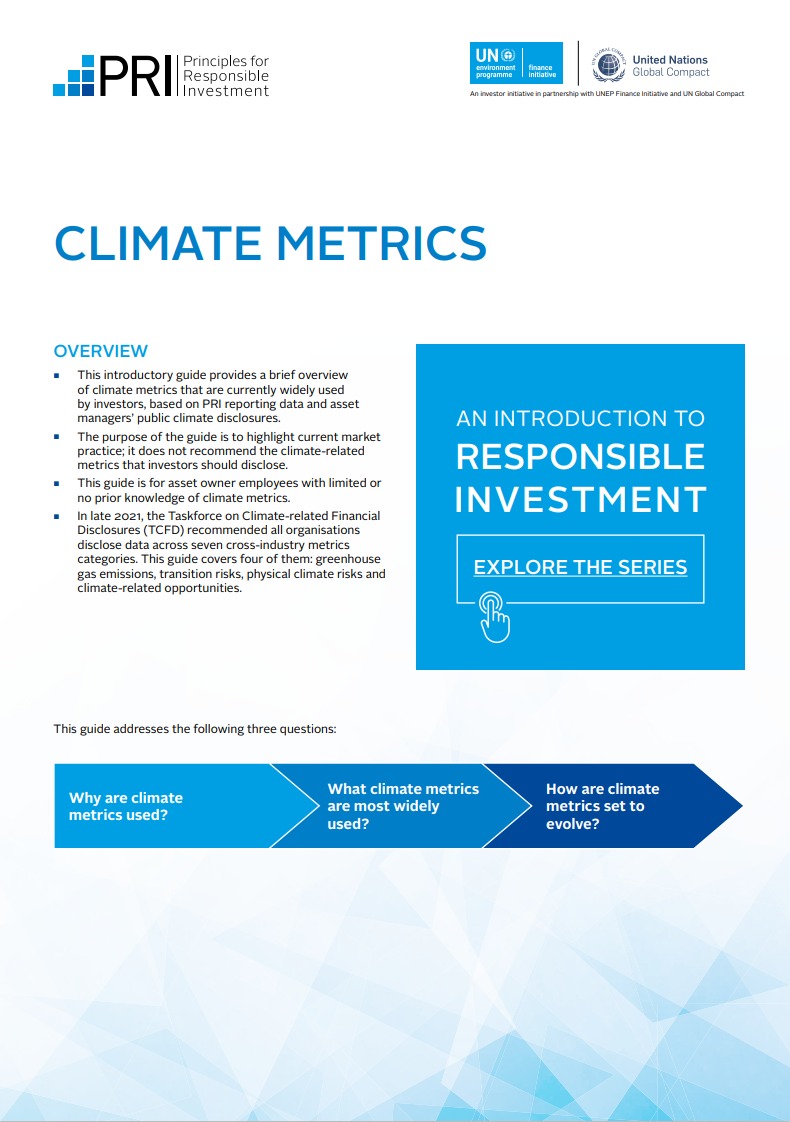
Overview
This introductory guide provides a brief overview of climate metrics that are currently widely used by investors, based on PRI reporting data and asset managers’ public climate disclosures.
The purpose of the guide is to highlight current market practice; it does not recommend the climate-related metrics that investors should disclose.
This guide is for asset owner employees with limited or no prior knowledge of climate metrics.
In late 2021, the Taskforce on Climate-related Financial Disclosures (TCFD) recommended all organisations disclose data across seven cross-industry metrics categories. This guide covers four of them: greenhouse gas emissions, transition risks, physical climate risks and climate-related opportunities.
Why are climate metrics used?
Climate metrics enable investors to:
understand and manage climate-related risks, opportunities and impacts associated with their investments;
track progress against goals, such as reaching net-zero greenhouse gas emissions by a specified date;
comply with regulatory reporting requirements;
inform beneficiaries of climate-related risks, opportunities and impacts associated with their investments; and
conduct climate-focused stewardship, either independently or in collaboration.
